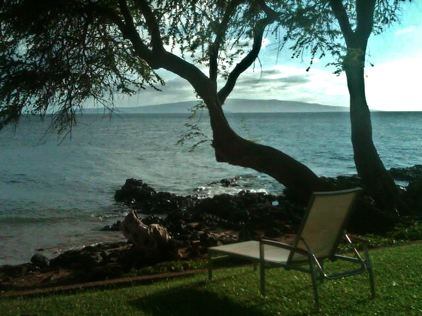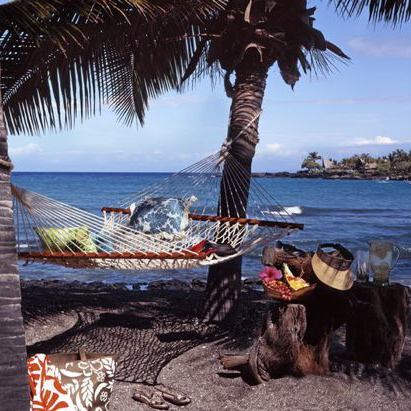Tourism is the number-one industry in Hawaii, but it can be an unreliable source of income. The Honolulu Star-Advertiser‘s tourism reporter Allison Schaefers joins Peter to discuss the impact of the Japanese tsunami on the state of Hawaii and recent efforts to bolster their tourism business.
Peter Greenberg: When so much of your economy is totally dependent on tourism, it can sink or swim based on arrivals, money spend, and other country or state’s economies.
Allison Schaefers: The Hawaiian economy is so vitally based on tourism that about 82 percent of our population is touched by it in terms of job creation and income.
PG: Many years ago when the Japanese economy essentially tanked, the Hawaiian economy tanked, too. You’re facing that same problem again because arrivals dropped from the tsunami.
 AS: Interestingly enough our arrivals did drop from the tsunami, but the impact from Japan has not been as bad as we previously expected. We have been fairly lucky in that regard. In April, our total arrivals were up 5.4 percent and that was after a 23 percent drop in arrivals from Japan. Also, the total spent went up about 20.2 percent. Hawaii has been working to diversify our markets. Japan is now our number-three market.
AS: Interestingly enough our arrivals did drop from the tsunami, but the impact from Japan has not been as bad as we previously expected. We have been fairly lucky in that regard. In April, our total arrivals were up 5.4 percent and that was after a 23 percent drop in arrivals from Japan. Also, the total spent went up about 20.2 percent. Hawaii has been working to diversify our markets. Japan is now our number-three market.
PG: What’s your number-one market?
AS: Our number-one market continues to be the U.S. West Coast. The U.S. East Coast is our second.
PG: My audience asks me all the time: When is the discount season in Hawaii? Are there any deals left?
AS: Now is a great time to travel to Hawaii. Airfares had gone up slightly but they’re back down a little bit. The one thing we heard all the time in the hospitality industry is that the spending isn’t back up to where they want it. We’ve really had an occupancy-driven recovery.
PG: In other words, people are discounting?
 AS: Yes, people are discounting heavily. Prices are where they were several years ago.
AS: Yes, people are discounting heavily. Prices are where they were several years ago.
PG: What’s an average room rate?
AS: It varies depending on the island and the hotel category. You could certainly get a room from anywhere from $50 to $400 a night. There’s a wide range and something for everybody here
PG: And beyond showering and sleeping, how much time are you really spending in your room? And the answer is, not a whole lot. Also, you don’t have to have a beachfront to enjoy the beach.
AS: I would certainly agree with you. I live in Hawaii and I don’t have a beachfront home, but I certainly enjoy our beaches.
One thing people don’t realize is that the larger beachfront hotels popular with groups––the Hilton Hawaiian Village, the Sheraton and Starwood properties––did lose business from Japan. To recoup business, their rates are good right now.
PG: If you look at the actual impact of the number of rooms they lost, we’re talking about a lot of rooms they’ve got to fill.
AS: Marriott and Hyatt would be in that category as well. You can still get good rates on the on-beach properties at the big showboat properties.
 PG: It goes beyond the room itself. When you’re negotiating for a room, also negotiate for breakfast. This is true in Houston or Hawaii. Ask: Can my kids say free or can they eat free? Will you throw in free parking? It’s amazing what hotels will do when they want to fill rooms.
PG: It goes beyond the room itself. When you’re negotiating for a room, also negotiate for breakfast. This is true in Houston or Hawaii. Ask: Can my kids say free or can they eat free? Will you throw in free parking? It’s amazing what hotels will do when they want to fill rooms.
AS: A special just came across my desk from the Outrigger Reef that includes breakfast for two daily.
PG: And breakfast in Honolulu can easily be $35 or $40 a person, so that’s $80 right there.
AS: Although if you work in Waikiki and you know the ins and outs, you can find a deal. Now, a bad idea is the getting a package with the traditional plate lunch.
PG: Wait! I disagree. I’ve had a great time having plate lunch. Can you explain what plate lunch is?
AS: Plate lunch is usually a very generous portion of some really fattening entree that comes with rice and potato or macaroni salad. That’s how the locals have it here. Hawaii was a plantation state before tourism was king and the whole plate lunch concept comes from the days when people needed a big, significant lunch to work the plantation. Now you can have gourmet plate lunch too but our traditional plate lunches are based Hawaii’s plantation and international roots.
PG: What’s one great example of such a lunch?
AS: There’s loco moco which is very unique to Hawaii. The plate would have a couple scoops of rice, some ground beef with gravy, and an egg.
By Peter Greenberg for PeterGreenberg.com.
Related Links on PeterGreenberg.com:












